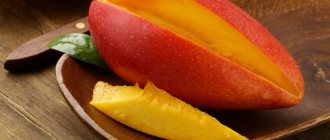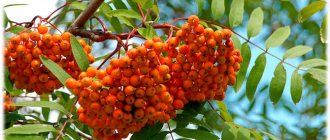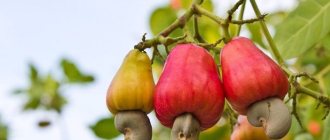Botanical description
Plum is a fruit plant that belongs to the Rosaceae family. It grows in the form of a spreading tree with an ovoid crown. The height of individual specimens reaches 15 meters. Among the cultivated hybrids there are bush-like varieties.
The main root is a taproot and goes deep into the soil. Most of the roots are located at a depth of no more than half a meter. The bark is brown, with a brown tint or gray, the edges of the elliptical leaves are serrated or crenate.
Blooms in late spring with numerous, small white flowers. After flowering, a drupe fruit is formed. Ripe plums are yellow, red, blue, purple, almost black, and greenish in color. The pulp is juicy, depending on the ripeness of the variety – sweet or sour.
The plum first appeared as a cultivated fruit plant in the Caucasus. It is generally accepted that natural hybridization of sloe and cherry plum occurred. Based on the natural hybrid, many improved varieties have been obtained through selection.
Features of the workpiece
It is recommended to buy plums during the mass harvest season - from late June to early October. At this time, the most healthy and natural fruits, not subjected to additional processing, appear on markets and store shelves. All that remains is to choose the right plum and prepare it for future use.
Fruit selection
The choice depends on the purpose of the acquisition. People buy fully ripe, soft plums for food - they are the sweetest and juiciest. For storage, cooking compote and jam, choose dense fruits - they will better retain their shape in preparations and will not spoil the next day. When choosing plums, they are guided by three general indicators.
- Ripeness. The fruit is quite soft to the touch, but not wrinkled. The exception is varieties that remain firm even when fully ripe.
- Skin. A high-quality fruit has a uniformly colored skin without spots. There are no dents, cracks, or signs of rotting on its surface.
- Aroma. Ripe plums give off a pleasant fruity aroma.
Storage at home
At home, fresh plums do not store for long - they quickly become overripe and begin to spoil. To extend shelf life, four storage methods are used.
- In boxes. Slightly unripe plums are wrapped in paper and placed in shallow boxes in one layer. Keep in a well-ventilated, dark, cool place. Shelf life is several days.
- In a refrigerator. Unripe plums are packaged in plastic bags, measuring one and a half to two kilograms, and put into the fruit compartment. Periodically, the bags are sorted out and the ripened fruits are set aside. Shelf life in the refrigerator is up to three weeks.
- Freezing. The plums are washed, dried, cut into halves, and the pits removed. Place in containers or plastic bags and put in the freezer. Frozen fruits can be stored without loss of properties for up to a year.
- Drying. Excess fruits are used to make prunes. The plums are sorted, washed and dried. To reduce drying time, blanch for 30 seconds in boiling water with the addition of a small amount of soda (10 g per liter of water). The fruits are washed and wiped with a paper towel. Dry in the sun, in the oven or in an electric dryer.
If the plums are unripe, they are laid out on a sunny windowsill. To speed up ripening, the fruits are placed in a container along with apples and bananas. Ripe fruits emit ethylene, which promotes faster ripening of their “neighbors”.
Chemical composition
The beneficial properties of plum are due to its rich composition. It contains many vitamins, microelements, fiber, sugars and other valuable substances. Data on the nutritional value and calorie content of the fruit are given in the table.
Table - Nutritional value and calorie content of plums
| Nutritional value per 100 g | G | Calorie content per 100 g | kcal |
| Squirrels | 0,79 | Fresh fruits | 48 |
| Fats | 0,29 | Prunes | 230 |
| Carbohydrates | 0,57 | Plum puree | 40 |
| Cellulose | 1,48 | Plum jam | 287 |
| Organic acids | 0,99 | Slivovitz | 301 |
| Ash | 0,46 | ||
| Starch | 0,09 | ||
| Water | 88,11 |
Due to its rich chemical composition, plums are considered a useful product for vitamin deficiency. In the table you can see what vitamins are contained in plums.
Table - Vitamins, micro- and macroelements in plums
| Vitamin name | mg per 100 g | Microelements | mg per 100 g | Macronutrients | mg per 100 g |
| RR | 0,55 | Iron | 0,5 | Calcium | 19,7 |
| IN 1 | 0,05 | Manganese | 0,1 | Potassium | 213,9 |
| A | 0,016 | Fluorine | 0,002 | Chlorine | 0,9 |
| WITH | 10 | Nickel | 0,014 | Magnesium | 8,7 |
| AT 2 | 0,04 | Zinc | 0,1 | Phosphorus | 19,4 |
| AT 5 | 0,2 | Iodine | 0,003 | Sulfur | 5,9 |
| AT 6 | 0,08 | Silicon | 3,9 | Sodium | 17,6 |
| E | 0,6 | Copper | 0,086 | ||
| AT 9 | 1,5 | Chromium | 0,003 | ||
| Beta carotene | 0,1 | Molybdenum | 0,007 |
The plum pit contains the cyanogenic glycoside amygdalin. In the human body it decomposes with the release of hydrocyanic acid. Its concentration is very low - there will be no harm from swallowing one seed. During heat treatment, amygdalin is destroyed and becomes harmless.
Plum - health benefits and harms, calorie content, composition
Many people wonder if a plum is a berry or a fruit? They are trying to classify it as a berry because of its small size; in addition, there are shrubby varieties of plum, but since it has only one seed and is formed in place of a fertilized flower, often a full-fledged tree, then without a doubt it is a fruit.
common plum is a juicy fruit with a sweet and sour taste from the Rosaceae family. It came to us from Western Asia; its homeland is considered to be the territory between the Altai and Caucasus mountains. This stone fruit tree has gained quite a lot of popularity in our country, thanks not only to its characteristic taste of fresh or dried fruits, but also to various juices and twists from them.
The fruit itself is of hybrid origin as a result of natural crossing of such species as cherry plum and blackthorn.
There are so many varieties of cultivated plums that grow - both black Hungarian and honey, then there are varieties by color - blue, red, white, yellow...
Fruits of both dark and light colors are very useful. The darker and more intense the color, the richer the fruit is in antioxidants; light-colored individuals have more vitamin A, which, as everyone knows, fights vision diseases and maintains muscle tone and skin tone.
But plum not only has a wonderful taste, it is also beneficial for the human body, thanks to its saturation with microelements and vitamins. As a result of breeding, many different varieties of plums appeared, but they all contain a very rich set of substances beneficial to the body.
The most important for our health are organic acids, sugars, pectins, flavonoids, vitamins A, E, C, group B, potassium, iodine, copper, zinc, iron.
The most valuable thing about the fruit is that, despite the many nutrients in its composition, plums are quite low in calories - 42 kcal per 100 grams of product.
Benefits of plums and medicinal properties
Plum is used to strengthen the immune system and treat various diseases. It is known to many as a mild laxative. The following medicinal properties of plums are especially appreciated.
- Strengthening the immune system. The complex of beneficial substances enhances the body's defense response and helps resist viruses and infections.
- Normalization of metabolism. The combination of fiber and organic acids helps normalize metabolic processes.
- Increase in hemoglobin. Iron in fresh fruits and prunes helps to more quickly restore hemoglobin levels in anemia.
- Improved bowel function. Due to the abundance of fiber and mild laxative effect, the fruits help with constipation and intestinal atony.
- Help the heart. Plums contain a lot of potassium, which is essential for heart health. They have a mild diuretic effect and lower blood pressure.
- Prevention of atherosclerosis. The healthy pulp strengthens blood vessels, lowers cholesterol levels, and normalizes blood circulation.
- Removing toxins. Plum helps cleanse the body of waste and toxins, improves the condition of the liver, kidneys, and bladder.
- Strengthening the nervous system. B vitamins have a beneficial effect on the nervous system.
- Prevention of thrombosis. Coumarins slightly thin the blood and reduce the likelihood of blood clots.
- Wound healing. Plum leaves have wound healing properties. They are used to make lotions, applied to wounds and ulcers.
- Prevention of oncology. Plums contain a substance that destroys cancer cells and prevents them from developing. Fresh fruits are used as a preventive and auxiliary agent in the treatment of cancer.
During pregnancy, women often face the problem of constipation and swelling. According to reviews, introducing a small amount of plums into the daily diet has a mild laxative and diuretic effect.
Plum - beneficial properties
Simultaneously with the cultivation of plums, people learned to dry them for long-term storage, and also learned about the beneficial properties of this fruit.
Of course, the plum cannot be called a panacea for all diseases, but there are many ailments that a simple plum berry will help alleviate .
1. High cholesterol. Plum lowers it and improves blood circulation.
2. Reduced elasticity of blood vessels. Regular consumption of plum fruits (not in large quantities, only 5-6 pieces per day) can significantly improve the situation.
3. Hypertension is a faithful companion of the first two conditions. Plums have the ability to normalize high blood pressure.
They help remove excess fluid from the body, increase the adaptability of blood vessels to pressure changes - restore their elasticity, and fight cholesterol deposits that narrow the lumen of blood vessels.
4. Decreased vitality. Plums quickly and effectively restore physical activity and mental abilities, and have a beneficial effect on the functioning of the nervous system.
5. Constipation, intestinal asthenia. Plums and prunes are recognized remedies for these troubles. The fruits improve peristalsis, gently cleanse the intestines, and promote timely, complete and regular bowel movements.
Eat 4-5 dried or fresh plums at night and in the morning you will experience pleasant lightness and a great mood.
6. Lack of appetite. Plum berry increases appetite and increases the amount of gastric juice secreted.
7. Overweight. Thanks to the abundance of fiber, plums perfectly saturate and at the same time cleanse the body of toxins.
8. Vitamin deficiency. Plum fruits, both fresh and prunes, cope well with all types of vitamin deficiencies. They should be eaten during periods of exacerbation, for prevention.
9. Reduced immunity. Dried or fresh plums will also help increase it.
10. Signs of skin aging. Masks made from plum pulp will help refresh your complexion, smooth out wrinkles, and make your skin glow from the inside.
11. Wounds and injuries. Preparations based on plum leaf are considered an excellent hemostatic and wound healing agent.
12. Stagnation of bile. Plum is a mild choleretic, restores the patency of the bile ducts, and is good for the liver.
13. Thrombosis. Plum leaves and fruits contain coumarins - substances that dilate coronary vessels, cure thrombosis and prevent thrombosis.
14. Hair loss. Masks and decoctions from infusions of plum leaves will help preserve your hair.
15. Heart disease. Potassium, present in plums in large quantities, will help support the heart muscle and slow down the progression of the disease.
16. Colds and viral attacks. Plum tea reduces high fever well and gives strength to fight insidious ailments.
17. Impaired metabolism. By having a comprehensive effect on the body, plum is able to normalize metabolic processes in it.
The fruits of plum trees deserve the highest attention, the Queen of England herself, Elizabeth 2, knows this, because it’s not for nothing that she starts every day after waking up with two plums.
And this is not a joke, indeed, for many years in a row, Elizabeth has been eating a couple of plums from the palace garden on an empty stomach, and she feels and looks great for her age.
Take her example, eat fresh fruits during the season, and prunes during the cold season, and no disease will threaten you.
Plum - harm
Everything is good in moderation. Same with plums. The main principle when consuming plums is moderation. Eating fruits will most likely lead to flatulence, diarrhea and even nausea. It's better to do it little by little, but regularly.
Plums can also be harmful to people suffering from peptic ulcers, acute gastritis, and inflamed hemorrhoids. Plums contain a lot of sugar, so they are on the prohibited list for diabetics.
For gout and rheumatism, overuse of plums is also not advisable; it removes fluid from the body and can cause inflammation.
As for plums in baby food, processed puree from them can be given to children from one year old, but fresh fruit only from three. Remember this and be healthy.
Contraindications and side effects
Plum is a healthy, natural product. In most cases, the fruits improve health, but sometimes they can be harmful. There is a list of diseases for which their use is undesirable. Contraindications for plums are given in the table.
Table - Contraindications for eating plums
| Type of plum | Contraindications |
| Fresh fruits and natural juice | – Individual intolerance; – diarrhea; – bloating; – rheumatism; – gout |
| Sour varieties | Gastritis with increased acidity of gastric juice |
| Sweet varieties | Diabetes |
| Dried fruits | – Children up to 6 months; - diabetes |
| Leaf decoction | Low blood clotting |
The harm of plums is much less than the benefits. If there are contraindications, you should refrain from using it or eat it in minimal quantities. A large amount of plums eaten can cause side effects even in a healthy person - diarrhea, bloating, pain in the epigastric region.
Benefits of plum
Like many products, plums have strong or mild medicinal properties:
- a large amount of potassium has a beneficial effect on the condition of the heart muscles;
- Vitamin P tidies up blood vessels and thereby reduces blood pressure;
- coumarins prevent the formation of blood clots, which is the best prevention of age-related dementia, strokes and heart attacks;
- The laxative effect of fresh fruits is well known; due to the high pectin content, it helps eliminate cholesterol;
- relieves toxins - they are bound by pectin in the intestines and are quickly eliminated from the body;
- cleanses the liver;
- alleviates the condition of rheumatism.
In light of the above, what are the benefits of plums during pregnancy? During this period, the presence of folic acid in it, which is responsible for the absence of defects in the development of the neural tube in the fetus, turns out to be especially valuable.
When fighting edema, a pregnant woman’s body loses potassium, and plums help replenish its deficiency, thereby maintaining heart function and adequate blood supply to the fetus.
Preventing blood clots is a critical part of maternal health care. The beneficial properties of plums for healing veins are manifested due to the presence of coumarins, pectin and fiber. Coumarins cleanse the lumen of blood vessels, and their laxative effect protects against constipation and the occurrence of hemorrhoids.
Preparation of medicines
All parts of the plant have medicinal properties - fruits, plum flowers, leaves, wood, bark. They are used to prepare various medicines. Recipes and indications for use are given in the table.
Table - Medicines from plum
| Medicine | Cooking method | Indications | Mode of application |
| Strong decoction of leaves | 2 tablespoons of leaves pour a glass of water, infuse | – Purulent wounds; – ulcers; - acne; – tonsillitis | - Make lotions; – wipe the skin; – gargle twice a day |
| Weak decoction of leaves | 1 tablespoon of raw material is poured into 200 ml of boiling water and left to infuse. | – Periodontal disease; – stomatitis; – kidney and bladder diseases | - Rinse your mouth; – take half a glass three times a day |
| Bark decoction | - 1 teaspoon of bark is poured into a glass of hot water; – simmer for half an hour in a water bath; – filter, add boiled water to the original volume | – Diarrhea; – erysipelas; - leucorrhoea in women | – Take a third of a glass three times a day; – used as an external remedy; - perform douching |
| Wood decoction | 1 teaspoon of wood is poured with boiling water, infused, filtered | - Heat; - cold | Take a third of a glass at a temperature |
| Flower decoction | 25 g of flowers are brewed as tea in a glass of water | – Constipation; - nausea; – bloating; – intestinal colic; – shortness of breath; – neuralgia | Take half a glass orally up to three times a day |
| Plum juice | Plums are mashed and the juice is squeezed out | – Giardiasis; – anemia; - cardiovascular diseases | Drink 2–3 glasses of juice per day |
Medicinal properties
Plums, the health benefits and harms of which are closely related to their composition, have the following medicinal properties:
- strengthen the immune system;
- normalize metabolism;
- improve the functioning of the gastrointestinal tract;
- strengthen the nervous system;
- increase hemoglobin;
- remove toxins;
- heal wounds.
Regular consumption of plums also helps the heart function and lowers blood pressure. The fruits have a diuretic effect and are good for the prevention of thrombosis, cancer and atherosclerosis.
For women
Fruits are useful for women not only for constipation, anemia and metabolic disorders. Plums contain a lot of calcium, which strengthens the skeleton and maintains the condition of bones during pregnancy, menopause, physical activity or during diets.
Due to the composition of the fruit, constant moderate consumption of plums is considered a good preventive measure against breast and cervical cancer, as well as other oncologies that are specific only to women. With irregular and painful menstruation, plums help improve the condition, but only as an additional therapy prescribed by a gynecologist.
During pregnancy, eating plums is acceptable if there is no deterioration in health. However, during breastfeeding, you should first consult with your pediatrician and your therapist so as not to harm both your body and your baby. It is recommended to eat fruits only starting from the 2nd month of lactation, unless otherwise directed by a specialist.
For men
To speed up metabolism, increase tone and prevent prostatitis, plum fruits are especially useful for men. Regular consumption also regulates testosterone production and serves as a prevention of cardiovascular diseases. This is due to the property of plums to cleanse blood vessels and strengthen the entire circulatory system.
For children
For young children, any preparations made from plums are allowed from 6 months. Neither fresh fruits nor medicines will benefit infants.
Eating fruits has the following effects on a child’s health:
- prevents the development of anemia;
- strengthens bones and promotes the formation of a healthy skeleton;
- help digestion.
Constant complementary feeding is recommended to be introduced from 9 months. It is advised to accustom them to fruits with prune compote, then gradually begin to give 1-2 berries a day, observing whether allergic reactions, abdominal pain or other symptoms of intolerance occur.
Inclusion in the diet menu
Fresh plums contain a large amount of fiber and have low calorie content. It is often included in diet menus. Regular consumption of fruits helps to activate metabolism and speed up metabolism. The plum diet is used for weight loss and cleansing the body of toxins.
For weight loss
A three-day mono-diet on plums helps you quickly lose a couple of kilograms. The diet menu consists of a kilogram of plums and at least one and a half liters of liquid. You are allowed to drink clean, still water and unsweetened green tea. The diet is repeated twice a month.
If you are obese, you need not a quick, but a stable result - the tactics for losing weight are changed. Every week there is one fasting day. The food menu is the same as during the three-day diet. Fasting days are repeated until the desired result is achieved. On average, it takes from three to four kilograms per month.
To cleanse the body
The diet to cleanse the body of waste and toxins is designed for two months. During this time, adhere to the following diet.
- Breakfast. On an empty stomach, drink a glass of freshly prepared plum juice without added sugar.
- Lunch. Half an hour after breakfast, eat one cracker.
- Other meals. For the rest of the day, they adhere to their normal diet.
The effect of the cleansing diet will be noticeable within a week. There will be a feeling of lightness and bowel function will improve. After two months, the body will be completely cleansed of toxins.
Benefits and harms during pregnancy and breastfeeding
Pregnancy is not a contraindication to eating plums. This is due to the following factors:
- folic acid in the fruit is necessary for the proper development of the fetus;
- potassium in the drain promotes the rapid removal of fluid from the body, and, accordingly, the elimination of edema;
- due to the high content of dietary fiber, plum stimulates the gastrointestinal tract and prevents constipation;
- Vitamin C contained in plum fruits prevents the development of viral diseases, which are extremely undesirable during pregnancy.
Regular consumption of plums while pregnant helps cope with high blood pressure, which can harm the development of the child.
Contraindications to eating plums during pregnancy are individual intolerance to the fruit, flatulence, diarrhea, and gastrointestinal disorders. It is strictly not recommended to eat unripe plums, so as not to cause pain in the gastrointestinal tract, heartburn and indigestion.
If a mother is breastfeeding, then she should be careful about eating plums. The only factor that determines the need to take prunes or fresh fruits is constipation in a child. But even in this case, you should be careful, otherwise the baby may develop diarrhea, which is not easy to deal with.
The fruit should be introduced into the diet gradually, starting with one berry per day, and carefully monitor the baby’s condition and behavior. If the child does not have:
- diarrhea;
- bloating;
- colic,
then you can gradually increase the number of plums you eat daily to 3-4 pieces.
Application in cosmetology
Plum is often used in cosmetology - face masks are made from it. Antioxidants slow down the aging process, a complex of vitamins and minerals saturates the skin with nutrients and relieves inflammation. Below are four mask recipes.
- From wrinkles. The pulp of ripe plums is crushed and mixed with a teaspoon of honey and egg yolk.
- From fat content. Two fruits are mashed into a puree, a teaspoon of white wine, grated carrots, a sour apple are added, and an egg white is poured in.
- For acne. Grind two boiled plums, add a teaspoon of onion and garlic juice. Keep it for no more than five minutes or apply it pointwise.
- From freckles and age spots. Fresh plums are made into a paste and mixed with sour milk. Fruit and lactic acids act as a peeling and slightly lighten freckles and age spots.
Instead of lotion for problem skin, you can prepare a decoction of plum leaves. Pour a full tablespoon of dry leaves into a glass of boiling water and leave until it cools completely. The infusion is filtered and a little alcohol is added. Store the lotion in the refrigerator.
Use in folk medicine
Plums, whose health benefits and harms are widely known in folk medicine and herbal medicine, are used in different ways. Not only fruits or leaves are used, but also other parts of the plant. Some medications are made not in the form of the usual infusions, decoctions or tinctures, but with vinegar.
Infusion of plum leaves for sore throat
The infusion has anti-inflammatory properties, so it is recommended not only for sore throat, but also for inflammation of the bladder and the prevention of various internal inflammations due to a sedentary lifestyle.
The infusion is prepared according to the following scheme:
- 1 tsp. crushed dry leaves, pour 250 ml of boiling water.
- Leave for 30 minutes.
- Gargle with a sore throat, or take 1 tbsp orally. l. for internal inflammation.
The course of treatment should not exceed 10 days. If there is no improvement, you should stop using it and consult a doctor to select other treatment methods.
Plum leaf poultice for various skin lesions
For dermatosis, eczema and skin damage, use hot paste from the leaves.
Prepare the drug following the following instructions:
- Fresh leaves are crushed, ground into a paste, you should get 3 tbsp. l.
- Add 100 ml of hot, but not boiling water.
- Wrap in warm cloth (scarf, handkerchief).
- Leave for 2 hours.
The resulting poultice is applied to damaged skin 3 times a day for 10–15 minutes. The course of treatment is 14 days.
Decoction of plum leaves for acne
The product is used to wipe skin with acne, areas affected by eczema or dermatitis.
Prepare according to this scheme:
- 1 tbsp. l. crushed dry leaves pour 200 ml of water;
- Cook for 20 minutes in a water bath over low heat;
- remove, cover with a lid;
- leave for 30 minutes, filter.
The prepared decoction should be used only after it has cooled. The course of use is not limited, but if use does not alleviate the condition within 14 days, the treatment should be changed.
Plum bark decoction for kidneys
For kidney diseases, as well as for malaria and diarrhea, a decoction of tree bark is used.
Prepare the product as follows:
- 1 tsp. crushed bark is poured with 1 cup of boiling water;
- put on water over low heat;
- keep for 30 minutes, remove from heat, cool slightly.
After cooling, filter the broth and add cold water to the original volume. Take 3 times a day, 1/3 cup, before meals. The course must be at least 3 weeks.
Plum juice for giardiasis
As an additional remedy for the treatment of giardiasis, freshly squeezed plum juice with pulp is used. Drink no more than 3 glasses per day, take regardless of meals. The juice is squeezed only from ripe fruits, from which the seeds have first been removed.
Alcohol tincture of plum pits
Tincture of seeds in alcohol helps with radiculitis; use the product only externally.
You will need:
- 25 g of seeds are ground to powder;
- pour a glass of vodka;
- leave for 7 days, shaking the mixture regularly.
Rub the tincture on damaged areas of the back. Occasionally, the remedy can relieve joint pain due to arthritis.
Vinegar decoction of leaves for eczema
The product is used only for advanced forms of weeping eczema. Vinegar extract is recognized only by traditional medicine, while official medicine considers it an extremely dubious way to treat eczema.
Prepare according to the following scheme:
- crush 1 cup of fresh leaves;
- ½ wine or fruit vinegar is diluted with the same amount of boiling water;
- bring to a boil;
- pour the leaves into the liquid and let it boil again;
- After boiling, leave to steep for 1 hour.
The cooled liquid is soaked into gauze and applied to the damaged areas of the skin. After 10 minutes, the area is washed with boiled water, then lubricated with propolis ointment. If there is no improvement after 2 weeks, contact a dermatologist for selection of treatment.
Cooking recipes
In cooking, plums are used to prepare desserts, drinks, and sauces. A striking example is the Georgian sauce made from sour plums “Tkemali”. You can prepare plums for the winter in the form of jam and compote.
Jam
Description. Ripe plums make aromatic jam, and dense fruits make beautiful jam. For flavor, cinnamon and star anise are added to the sweetness.
Ingredients:
- plums – 1.5 kg;
- sugar – 1.5 kg;
- water – 0.5 l;
- cinnamon – 1 stick;
- star anise - two pieces.
Cooking sequence
- Dissolve sugar in water, bring to a boil, turn off the gas.
- Divide the plums into halves and remove the pits.
- Add spices to the syrup, pour in plums, and leave the container for four hours.
- Place on the stove, bring to a boil, and cook over low heat for ten minutes.
- Spices are caught, jam is poured into jars, and rolled up.
Compote
Description. Plum compote has a rich taste. The drink retains most of the beneficial properties of raw fruits. If desired, the recipe can be supplemented with orange or lemon zest. Compote fruits are a delicious filling for pies.
Ingredients:
- plums – 1 kg;
- sugar – 400 g;
- water - one liter.
Cooking sequence
- The fruits are washed, cut, and seeds removed.
- The jars are filled approximately two-thirds with plums.
- Boil water and dissolve sugar in it.
- The plums are poured with hot syrup, the jars are immediately rolled up and turned over.
- Wrap up and leave until completely cool.
The use of plums in folk medicine is widespread as a tonic, anti-inflammatory, diuretic, and laxative. In moderation, fruits bring unconditional benefits to the body. Treatment with plums usually does not require consultation with a doctor unless there are clear contraindications.










